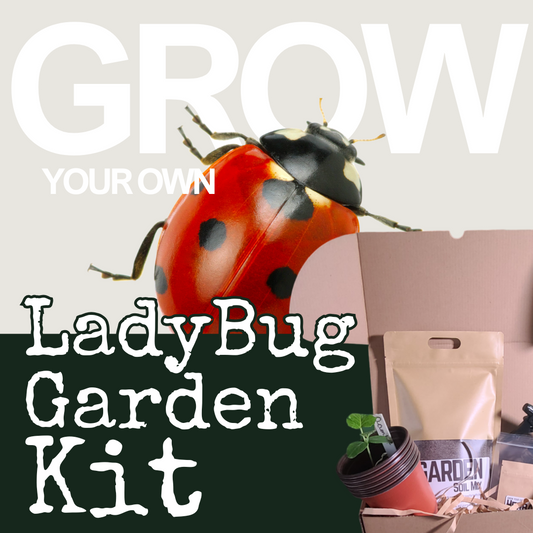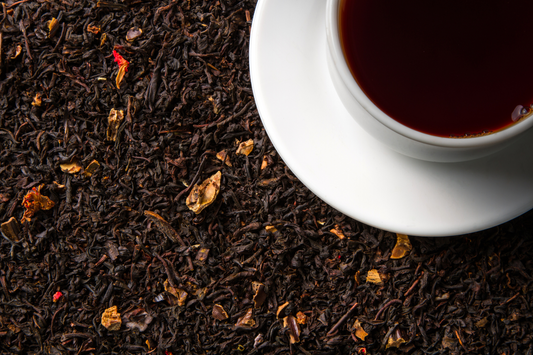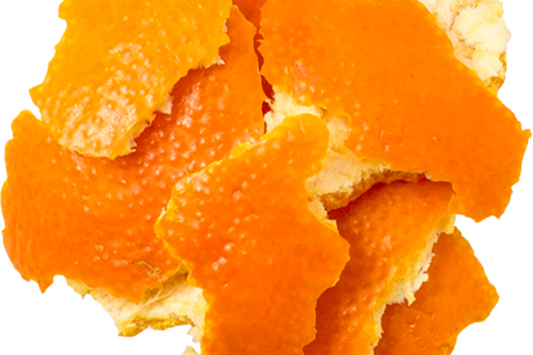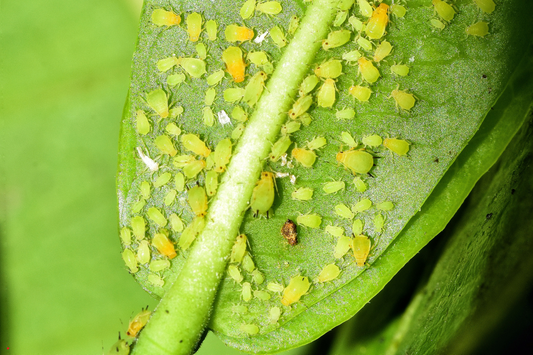What are Aphids?
- Aphids are small, sap-sucking insects that can be either winged or wingless. Measuring about a millimeter in length, they feed on plant sap and excrete a sticky, sugary substance called honeydew, which can lead to the growth of black, soot-like mold.
- Common species and types: There are over 4,000 species of aphids, with around 250 known to affect gardens.
- Physical characteristics: Aphids are small, soft-bodied insects with a pear-shaped appearance. Some mature aphids develop wings, while others remain wingless. They come in various colors, including brown, yellow, pink, white, green, and black.
Life Cycle and Behavior Of Aphids
- Aphids reproduce both sexually and asexually, allowing them to rapidly increase their numbers. Winged aphids play a crucial role in infestations, as they spread to new plants and establish colonies.
- Seasonal patterns: Aphids thrive in warm weather and typically appear in spring, persisting through summer and fall.
- Colony formation: Aphids extract water and nutrients from young plant tissues, weakening the plant by draining energy from stems, leaves, and sometimes roots. They often cluster under leaves, around buds, and on small stems, causing leaf deformation. In warm months, winged aphids leave the host plant to infests others, spreading rapidly.
Impact of Untreated Aphid Infestations
- Leaf deformation
- Yellowing leaves
- Stunted plant growth
- Plant death in severe cases
Common Host Plants
Aphids are known to feed on a variety of plants, but they are especially drawn to vegetables and leafy greens. They commonly infest crops such as cucumbers, squash, zucchini, pumpkins, and melons. Leafy greens like lettuce, bok choy, and chard are also frequent targets. Additionally, aphids are attracted to beans, beets, potatoes, tomatoes, and peppers, making them a significant threat to many home gardens and farms.
Signs Of Aphid Infestations
- Yellowing or deformed leaves
- Black mold growth
- Presence of ants (which protect aphids in exchange for honeydew)
- Sticky residue on leaves or stems
Organic Aphid Control Methods
Natural predators: Encourage beneficial insects such as ladybugs, hoverfly larvae, and lacewings to control aphid populations.
Water Spray: Use a strong stream of water from a hose or spray bottle to knock aphids off plants.
Worm Castings: Sprinkle around plant bases or make worm tea to spray on leaves. The enzyme chitinase helps break down aphid exoskeletons.
Orange Peels: Place around plants or make an orange peel spray. The natural compound d-limonene disrupts aphid’s waxy outer layer, causing them to suffocate. DIY Citrus Bug Spray
Soapy Water: Wipe leaves with fragrance-free, natural soapy water every 2-3 days for two weeks.
Yellow Sticky Traps: Can help catch aphids but may also trap beneficial insects.
Plant Removal: If an infestation is severe, remove the infested plant along with its roots and surrounding soil.
Chemical Aphid Control Methods
Insecticidal Soap: Targets aphids while minimizing harm to beneficial insects.
Neem Oil: A natural pesticide, but should be used cautiously to avoid harming pollinators and beneficial insects.
General Pest Control Sprays: Effective but can harm beneficial insects, animals, and the environment.
Preventing Aphid Strategies
- Improve air circulation by avoiding overwatering and ensuring proper drainage.
- Plant strong smelling herbs like garlic, chives, and onions to deter aphids.
- Attract natural predators like ladybugs and hoverflies.
- Avoid excessive nitrogen fertilizers, as they promote rapid growth of soft, sugary plant tissues that aphids love.
- Regularly check under leaves for aphids, ants, or sticky honeydew.Inspect plant stems and buds for clusters of aphids.
Companion Plants To Prevent Aphids
-
Planting flowers like coneflower, lavender, milkweed, hibiscus, and beans can attract helpful insects like hoverflies that eat aphids. These insects naturally keep aphids under control, so you won’t need to rely on chemicals.
- You can also use plants like marigolds, onions, chives, and garlic to keep aphids away. Their strong smells make your garden less appealing to these pests. Adding these plants will help create a healthier garden and keep your plants safe from aphids and other common bugs.
Hasty Roots Resources
- Worm Castings (For natural pest resistance)
- Grow-Your-Own Ladybug Kit (To introduce natural predators)
- Companion Planting Chart (To plan a pest-resistant garden)
- Spray Bottle (For organic pest control sprays)
- Beans, Chives, and Onion Seeds (For companion planting)
-
DIY Citrus Bug Spray (For natural pest resistance)






